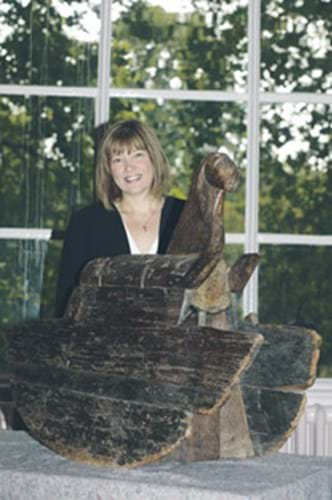
In 1610, Charles was ten years old, a delicate child with a speech impediment and walking difficulties. His guardian's household accounts list the making of a type of wheelchair for his use. Charles' poor health restricted his attempts to learn horse riding. Instead, he most probably spent his time on this heavy rocking horse constructed to a simple design in softwood and elm that would have helped strengthen the legs of the young boy.
In later life Charles I became an efficient rider and was famously depicted as a masterful and confident horseman in the celebrated portraits by Van Dyck.
Although there is no documentary evidence linking the rocking horse to Charles I, Bunny Campione said it was "very likely" that it was made for the young prince, probably by the state carpenter.
A plaque attached to the base records that this horse was Purchased on June 18th 1906 at Cheshunt House, Hertfordshire.
This is less than two miles from Theobalds Palace, a favourite hunting residence of Charles' father James I and the place where Charles was proclaimed king in 1625.
Theobalds was sold in 1650 and, when largely demolished for rebuilding in the early 18th century, items from the palace found their way into the other large houses in the area, of which Cheshunt Great House was one.
The rocking horse was dated to 1610 by oak specialist Victor Chinnery. Although the rocking horse has undergone restoration to its underside and legs, and it is missing its muzzle, it is in otherwise good condition considering its age, retaining its wonderful patina.
It pre-dates the earliest example in the V&A Museum of Childhood's collection of 20 rocking horses by 200 years, so the East London institution were understandably keen to acquire it when the owner, a private collector who acquired it in 1935, decided to sell. Bunny Campione recently brokered the deal for £25,000.
The toy specialist told ATG she had seen the rocking horse in the 1980s when working for Sotheby's, and believed it would have made substantially more had it ever been sold at auction. The owner was, however, keen for it to go to the nation and, indeed, rejected two higher offers, one from a museum abroad and another from a museum in the north of England.
It will go on public display when the Bethnal Green museum reopens after renovation in December.
By Alex Capon




